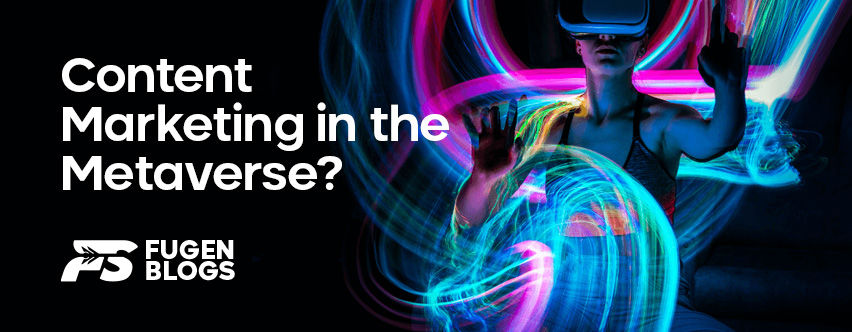The metaverse is an emerging digital realm where virtual and augmented realities converge, offering new possibilities for content marketing. As technology continues to advance, businesses are exploring innovative ways to engage with their audience within this immersive virtual world. In this blog, we will delve into the concept of content marketing in the metaverse, its potential impact on digital branding, and how businesses can adapt their strategies to thrive in this futuristic landscape.
Table of Contents
Understanding the Metaverse:
The metaverse is a virtual universe, a collective space where users can interact with each other and digital objects in real time. It goes beyond traditional 2D websites and social media platforms, providing a 3D interactive experience. In this interconnected digital ecosystem, businesses can create unique and immersive content marketing campaigns that blur the lines between reality and the virtual world.
Content Marketing Strategies for the Metaverse:
- Virtual Events and Experiences: Hosting virtual events, product launches, and brand experiences within the metaverse can generate buzz and engagement among the audience. These experiences can be highly interactive, allowing users to explore virtual environments, attend concerts, and participate in interactive campaigns.
- Branded Virtual Spaces: Businesses can create branded virtual spaces or stores within the metaverse, offering a new way for consumers to experience their products and services. These spaces can be personalized and interactive, making the brand more memorable and fostering deeper connections with customers.
- Immersive Storytelling: In the metaverse, content marketing can involve immersive storytelling through virtual reality (VR) experiences. Brands can take consumers on virtual journeys, allowing them to be part of the narrative and forge emotional connections with the brand.
Comparison Table: Traditional Content Marketing vs. Metaverse Content Marketing
| Aspect | Traditional Content Marketing | Metaverse Content Marketing |
|---|---|---|
| Dimension | 2D (text, images, videos) | 3D (virtual reality experiences) |
| User Interaction | Limited interaction and engagement | Highly interactive and immersive |
| Brand Experience | Less immersive and memorable | Creates unique and memorable experiences |
| Audience Reach | Targeting online platforms and websites | Engages users within the metaverse |
Stats on the Metaverse and Content Marketing:
- A survey by Nielsen found that 49% of consumers are interested in exploring virtual worlds and the metaverse.
- According to a report by Dentsu, businesses that adopt metaverse marketing strategies are expected to witness a 30% increase in customer engagement and brand loyalty.
FAQs:
Q: What devices are required to access the metaverse?
A: To access the metaverse, users typically need devices capable of running virtual or augmented reality experiences, such as VR headsets or AR-enabled smartphones.
Q: Can content marketing in the metaverse reach a global audience?
A: Yes, content marketing in the metaverse has the potential to reach a global audience as long as users have access to the necessary technology and internet connectivity.
Q: Are there privacy and security concerns in the metaverse?
A: Yes, as with any digital platform, there are privacy and security concerns in the metaverse. Businesses need to ensure data protection and user safety when operating within this virtual environment.
Conclusion:
The metaverse presents exciting opportunities for content marketing, enabling brands to engage their audience in entirely new and immersive ways. With virtual events, branded spaces, and interactive storytelling, businesses can create memorable experiences and forge stronger connections with their customers. As the metaverse continues to evolve, content marketing strategies will need to adapt to this futuristic landscape, keeping the audience at the center of the experience. Embracing the metaverse early on can position brands as pioneers in this emerging digital realm, fostering customer loyalty and setting new standards for digital branding in the years to come.


Leave a Reply